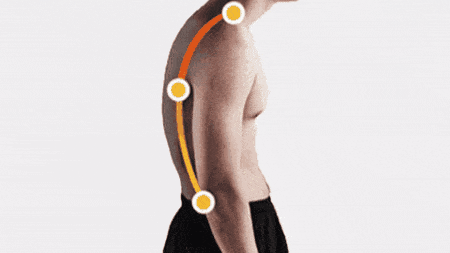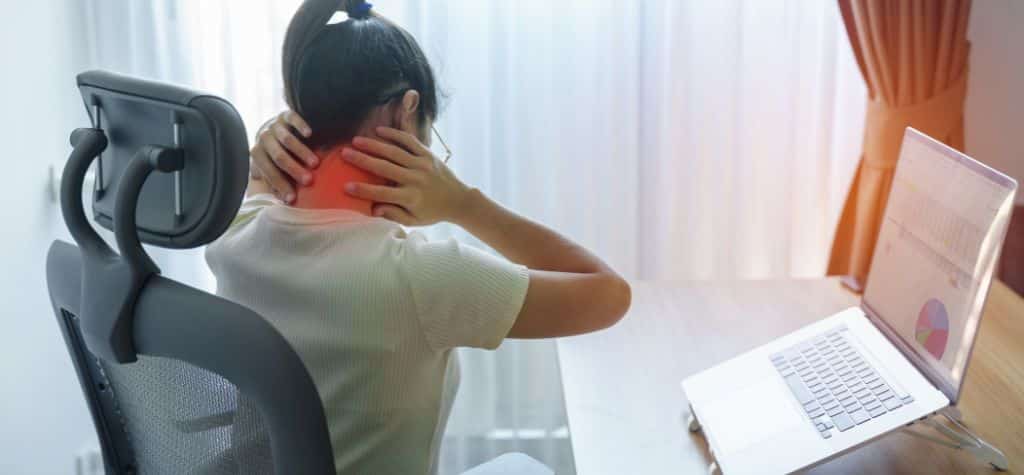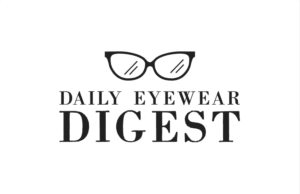The Overlooked Connection Between Vision and Posture
When people think of poor posture, they usually blame slouching habits, heavy bags, or weak muscles. But what if the real culprit is your eyesight? In 2025, a growing body of research shows a powerful connection between how we see and how we stand.
What the Eyes and Spine Have in Common
Our eyes play a central role in helping the body maintain balance and orientation. When our vision is blurry or strained, the body naturally compensates—often by leaning forward or tilting the head. These unconscious adjustments can lead to lasting postural issues.
The Body’s Compensatory Mechanisms
If you can’t see clearly, your head might tilt forward or your chin may jut out to get a better angle. Over time, this constant misalignment impacts your neck, shoulders, and spine—leading to chronic discomfort or even long-term skeletal changes.
Eye Strain and Poor Visual Habits in the Digital Age

Blue Light and Prolonged Screen Time
Screens dominate our lives—at work, at home, and on the go. Extended exposure to screens emits blue light that causes eye fatigue, dry eyes, and blurred vision. This discomfort prompts head-forward posture, one of the most damaging habits for spinal alignment.
Squinting and Forward Head Tilt
People with undiagnosed vision problems often squint to see clearly. This habit, especially combined with smartphone use, can create a slouched posture, leading to upper back strain and spinal misalignment over time.
Common Postural Problems Caused by Vision Issues
Forward Head Posture
This condition, often referred to as “tech neck,” involves the head protruding forward of the shoulders. It’s one of the most common posture issues linked to poor vision and screen habits.
Rounded Shoulders
Straining to see also pulls the shoulders inward. This not only affects appearance but also compresses chest muscles and limits breathing capacity.
Spinal Misalignment and Muscle Imbalance
Over time, poor posture caused by vision strain creates muscular imbalances—tight neck muscles, weak upper back muscles, and compensated lower spine curvature.
How Uncorrected Vision Affects Balance and Coordination
Visual Input in Maintaining Upright Posture
The eyes send constant feedback to the brain about the body’s position in space. If visual signals are unclear or incorrect, it disrupts the body’s sense of equilibrium.
Disorientation from Depth Perception Errors
Poor depth perception can make walking feel uncertain, prompting compensatory movements like shuffling, leaning forward, or keeping the head lowered—each contributing to postural decline.
Poor Vision in Children and Adolescent Posture

Classroom Posture and Myopia
In children, especially in the classroom setting, undiagnosed myopia (nearsightedness) leads to poor posture as students lean forward to see the board. This can establish bad habits that carry into adulthood.
Early Intervention Through Vision Screening
Regular vision checks in schools can prevent postural issues early by ensuring that children don’t overcompensate physically to see clearly.
The Role of Prescription Glasses in Supporting Posture
Right Prescription, Right Alignment
Wearing the correct prescription allows the eyes to stay relaxed. This reduces the need for compensatory head or neck movements that lead to posture problems.
Lens Position and Frame Fit Matter
Improper lens alignment, poor frame fit, or bifocal misplacement can force the wearer to tilt their head unnaturally, encouraging neck strain and visual fatigue.
Digital Eye Fatigue and Slouching Patterns
Symptoms That Affect Body Positioning
- Headaches
- Neck tension
- Blurry vision
- Dizziness
These symptoms often lead to awkward sitting positions or head tilts as we subconsciously try to relieve discomfort.
How Poor Lighting Contributes
Low or uneven lighting forces the eyes to work harder, prompting slouched or squinted positioning. Proper lighting can greatly reduce this tendency.
How Vision Therapy Can Help Improve Posture
Exercises to Rewire Eye-Brain Coordination
Vision therapy uses eye-tracking and focusing exercises to improve eye function. When the eyes move and focus more efficiently, the body doesn’t need to compensate.
Postural Benefits of Visual Training
Therapists often report that patients experience better balance, less head tilting, and improved body awareness after vision training.
The Link Between Vestibular System, Eyes, and Posture
Eye Movements and Balance Reflexes
Our sense of balance is rooted in the vestibulo-ocular reflex (VOR)—a system that links eye movement with head movement. Disruption here can throw off posture dramatically.
The Role of Inner Ear-Vision Integration
The vestibular system (inner ear) and visual system must work together. Poor vision impairs this teamwork, leading to instability and posture compensations.
How to Identify If Vision Is Affecting Your Posture

Warning Signs to Watch For
- Leaning forward while reading
- Neck pain after screen time
- Consistent squinting or head tilting
- Frequent balance issues
Simple At-Home Tests
Try walking with your eyes closed or standing on one foot. If your balance worsens significantly, it could be linked to visual misalignment.
7 Actionable Ways to Improve Both Posture and Vision in 2025
1. Get an Updated Vision Test
Many posture issues begin with outdated or incorrect prescriptions. Visit your optometrist regularly.
2. Adjust Your Screen and Lighting Setup
Keep your screen at eye level, reduce glare, and ensure proper ambient lighting.
3. Use Posture-Friendly Glasses
Look for glasses with anti-fatigue lenses, blue light filters, and proper nose bridge support.
4. Practice Eye Relaxation Techniques
Try the 20-20-20 rule: every 20 minutes, look at something 20 feet away for 20 seconds.
5. Do Regular Neck and Back Stretches
Daily stretches and strength exercises for the neck, back, and shoulders help realign posture.
6. Try Vision Therapy Exercises
Work with an optometrist or therapist to train eye coordination and focus.
7. Use Standing Desks with Adjustable Screens
Alternate sitting and standing with screens placed at the correct visual height to maintain posture.
Insights from Experts: Optometrists and Chiropractors Weigh In

Real-World Cases Linking Vision to Posture
Many health professionals now treat vision and posture as interconnected. Dr. Susan Lang, OD, notes, “I’ve seen neck pain vanish after correcting a simple vision problem.”
Tips from Health Professionals
- Don’t ignore mild vision symptoms
- Reassess glasses if posture changes
- Treat your eyes as part of your total body health
Technology and Tools That Support Healthy Vision-Posture Alignment
Ergonomic Desks and Monitor Arms
Tools that raise screens to eye level can eliminate the forward head tilt.
Smart Glasses with Posture Alerts
Some 2025 smart glasses offer real-time alerts when your head tilts or your eyes strain—nudging you back into a healthier position.
Frequently Asked Questions
Q1: Can poor vision really affect posture?
A: Absolutely. Unclear vision prompts body compensations like head tilting and slouching.
Q2: What type of glasses help with posture?
A: Glasses with blue light protection, proper fit, and fatigue-reducing lenses support both vision and alignment.
Q3: How do I know if posture issues are vision-related?
A: If posture worsens after reading or screen use, your eyesight could be a factor.
Q4: Can children develop poor posture due to eyesight?
A: Yes, especially in school-aged children. Myopia and screen strain can create bad habits early.
Q5: Will improving my vision instantly fix posture?
A: It helps significantly, but combining vision correction with posture therapy works best.
Q6: What professionals should I consult?
A: Start with an optometrist and follow up with a chiropractor or physical therapist for full alignment support.
Conclusion: Align Your Vision, Align Your Life
In 2025, the link between eyesight and posture is clearer than ever. Ignoring your vision doesn’t just affect how you see the world—it affects how you carry yourself through it. By addressing both your visual health and your physical alignment, you can unlock a more confident, pain-free, and powerful presence in every area of life.

